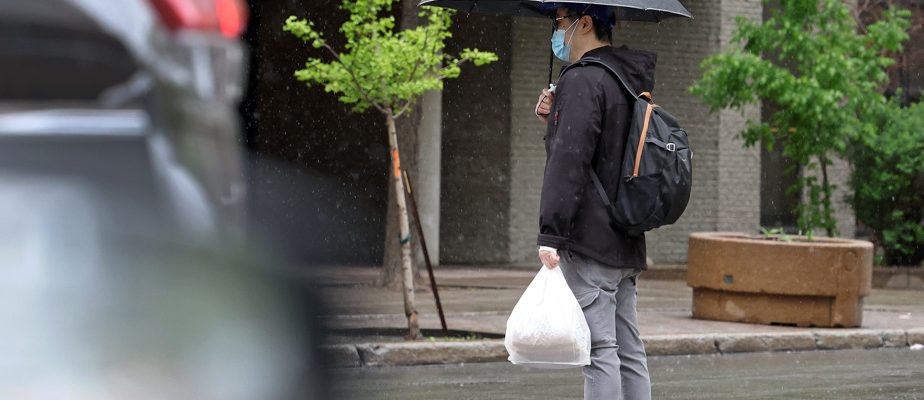Virus season is still in full swing. After COVID-19, influenza and RSV, it’s influenza B’s turn to make its presence felt. Even now, nearly 90,000 Quebecers contract an acute respiratory infection every day.
What there is to know
Respiratory viruses still circulate widely in Quebec, with an estimated 90,000 cases per day.
The trend should start to decline again in spring with the return of warm temperatures, virologists point out.
The effect of these viruses on overall mortality appears to continue to be felt in the province.
This is what data from the National Institute of Public Health of Quebec (INSPQ) reveals. The organization’s surveys, conducted once a week, highlight a high circulation of viruses since last August, more than eight months ago.
Unlike the triple epidemic experienced in the winter of 2022-2023 where three viruses were felt at the same time, the different respiratory viruses seem to have taken turns in recent months.
Indeed, COVID-19 first got the ball rolling in August and reached its seasonal peak in December. Then, the respiratory syncytial virus (RSV) began to be felt more from October, also reaching a peak in December.
The flu took over in December while influenza A began to circulate extensively. This strain has been in decline since February, but is increasingly being replaced by the influenza B strain, which is still growing. This in itself was predictable, since as a general rule, “the B strain of influenza always arrives after the A strain, as a good latecomer,” notes Benoit Barbeau, virologist and professor in the department of biological sciences at UQAM.

Towards a declining spring
More generally, this shift in viruses “is probably explained by the fact that when we are already infected, we are somewhat protected from one infection by another,” says Alain Lamarre, professor and researcher specializing in immunology and virology. at the National Institute of Scientific Research (INRS).
“In other words, the first virus takes the predominant place to occupy. There is also a question of the movement of viruses which means that it is not always very predictable in the long term,” he analyzes.
For Benoit Barbeau, “the situation is not surprising, since many people are still inside”.

PHOTO FRANÇOIS ROY, LA PRESSE ARCHIVES
Benoit Barbeau, virologist and professor in the department of biological sciences at UQAM
As people are close together, aerosols and droplets circulate easily and it starts. This is the same context that we experienced during the pandemic and that we will continue to experience again.
Benoit Barbeau, virologist and professor in the department of biological sciences at UQAM
Mr. Barbeau points out in passing that “cold temperatures can also make us more prone to being infected by physiological conditions in terms of nasal qualities”, an issue which is increasingly raised in the scientific community.

However, the situation should stabilize in the coming weeks. “As it is mainly linked to our lifestyle which changes a lot between summer and winter, we can think that all this should normally come back down when we are able to go out more than at the moment, a bit like we have seen during COVID-19,” Mr. Lamarre mentions on this subject.
“We are going to arrive at a time of the year when it should continue to decrease, with much less transmission. If we maintain continuous monitoring, ultimately, in the spring it will return even more to the ground. We should then be in a good situation,” Benoit Barbeau also believes.
An effect on mortality
Furthermore, the strong circulation of respiratory viruses seems to have contributed to increasing mortality in Quebec. The province actually experienced a new episode of excess mortality from August to January.
During these six months, deaths were 8.4% higher than expected, according to the Institute of Statistics of Quebec (ISQ). Once again, these excess deaths are concentrated among those aged 70 and over. However, the situation seems to have returned to normal since February.

Over the entire year 2023, approximately 77,300 people died last year in the province. This is 4,000 more than the ISQ demographers had predicted. Quebec thus ends 2023 with an overall excess mortality of 5.5%.
This represents 865 fewer deaths than in 2022, the year when Quebec recorded excess mortality propelled by the Omicron wave of 8.8%.
“We first observed an increase in deaths associated with COVID-19 this fall and afterward, the presence of other respiratory viruses also seemed to have had an effect at the end of the year. We cannot yet measure it precisely, but this epidemiological mix is the main cause that we are currently seeing,” argued ISQ demographer Frédéric Fleury-Payeur last January during an interview. .
